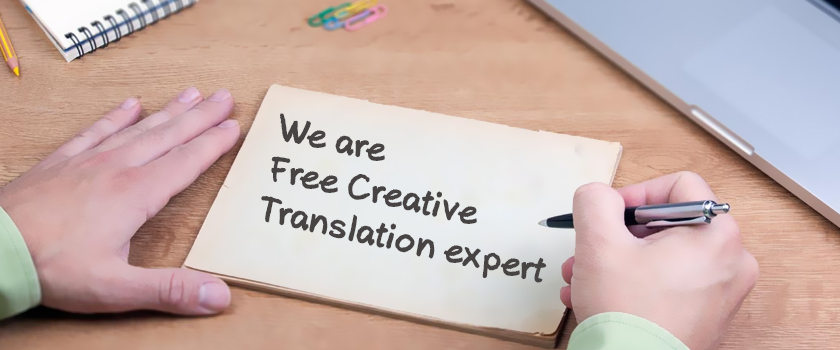Though literal translation is the basic and major translation method, it cannot solve all translation problems. Free translation attempts to produce on its receptors an effect as close as possible on the receptors of the source language, namely, to make the thought and cultural content of the source language more accessible to the receptor in the target language.
Free translation may make the target language smooth, clear and conventional in expressing the information of the source language(Snell,2003:38). It can be also correct or improve the logic to replace clumsiness with elegance, to remove obscurities, and to eliminate tautology in the target language, etc. For example:
⑤Original text: Failure to install and maintain a new, listed 3/4 “x3/4” temperature-pressure relief valve will release the manufacturer from any claim which might result from excessive temperature and pressures.
Translated text:如果没有安装和维护一个新的、经过认证合格的3/4 “X3/4” 降温减压安全阀, 由此产生的因过热或超压而造成的后果,制造商将不承担任何责任。
As we all know, English is a language of hypotactic structure, and this English sentence is a typical example. It has a complicated structure and is difficult to translate it into Chinese directly, so the translator chooses to paraphrase it.First he changes the original sentence into Chinese sentence structure “如果…,…”.By this method, the structure seems far away from the source text, but the target text is more clear and easier to be accepted by Chinese readers, thus it fulfills its translation purposes.
In order to avoid ambiguities and obscurities, the translator chooses to be loyal to the real meaning of the source text instead of its denotative meaning. “Failure to”–“没有”, “listed”–“经过认证合格”, release,…from any claim”–“不承担任何责任”. It seems that they stay away from the original meanings, but they fully express the meanings of the source text.
Therefore the result of free translation in this situation is better than literal translation.But one thing should be noticed that some free translations in the collocation level are made according to translation conventions.For example:
⑥ Original text: Recommend for: people with gouty arthritis
Expiry date: 36 months
Translated text: 适宜人群:痛风关节炎患者
保质期:36个月
If “Recommend for” and “Expiry date” are literally translated, the translated texts will be“建议给”and“到期日”.Except“建议给”is meaningless, the other one sounds quite natural and accurate in Chinese. But if they are translated into English, the Chinese translations are completely different from its original English meaning.
“Expiry date” is followed by “36months”, that means how long the medicine can be kept. The correct translation should be“保质期”. To realize the informative function of instruction translation, translators must be faithful to the contextual meaning of words or sentences in the situations like these. For this purpose, free translation is a good choice.
Most of time, the core guide of free translation is localization. When people buy a foreign product, if the translated manuals is full of cultural barriers, they are unable to understand it.
There is no doubt that manual translation is a failure. At this time, it is more right to adopt the free translation is to minimize the culture difference and to find an equivalent object for the original one.
Literature translation prefers to keep the cultural differences for creating a exotic world, but the purposes of manual translation require the translator to avoid the exoticism, instead, try to remove these cultural barriers for readers(李淑杰). So in manual translation, it is suggested to apply free translation methods to localize these cultural differences. There is an example of cosmetic:
⑦ Original text:
Main ingredients:
Ginkgo Bioba:promote circulation, capture free radicals;eliminate eye fatigue and edema.
Elastin:recover the elasticity of eye circle;eliminate wrinkles and blepharoptosis.
Hyaluronic Acid: improve the hydration action of tissues; strongly effectively moisten and build, make skin fine, tender and have glow; soften skin; decrease wrinkles and stop aging.
Translated text:
Type I: 主要成分:
银杏精华:促进循环、扑捉自由基、缓解眼部疲劳、浮肿。
弹力素:恢复眼周肌肤弹性、淡化皱纹及眼袋。
玻尿酸:增进组织的水合功用、强效保湿、修护,是肌肤细胞饱满、水嫩有光泽、柔软肌肤,减少皱纹及预防老化。
Type II: 主要组成部分:
银杏:促进循环,夺取自由基;消除眼疲劳和水肿。
弹性蛋白:恢复眼圈弹性;消除皱纹和睑下垂。
透明质酸:提高组织的水合作用;高效的湿润和建造,是肌肤细致,柔嫩和红润;是肌肤变柔软,减少皱纹和停止老化
As we can see from the above two examples, many culture differences exist: “edema” –-“浮肿”, “水肿”; “elastin”—“弹力素”, “弹性蛋白”; “blepharoptosis”— “眼袋”, “睑下垂”. In the type II, there are lots of collocations that the target receiver cannot understand, how serious the problem will be if a mainland user read a manual like this.
In the Type I, it simplifies the sentences and uses lots of familiar four words idiom to attract Chinese interest, so that cleans the culture barrier of each other. It not only makes the translation concise and neat, but also achieves the three functions of manuals. So every manual translator should keep the culture differences in mind and do proper changes where culture differences occur.
Read Also: Repetition Translation Usage









